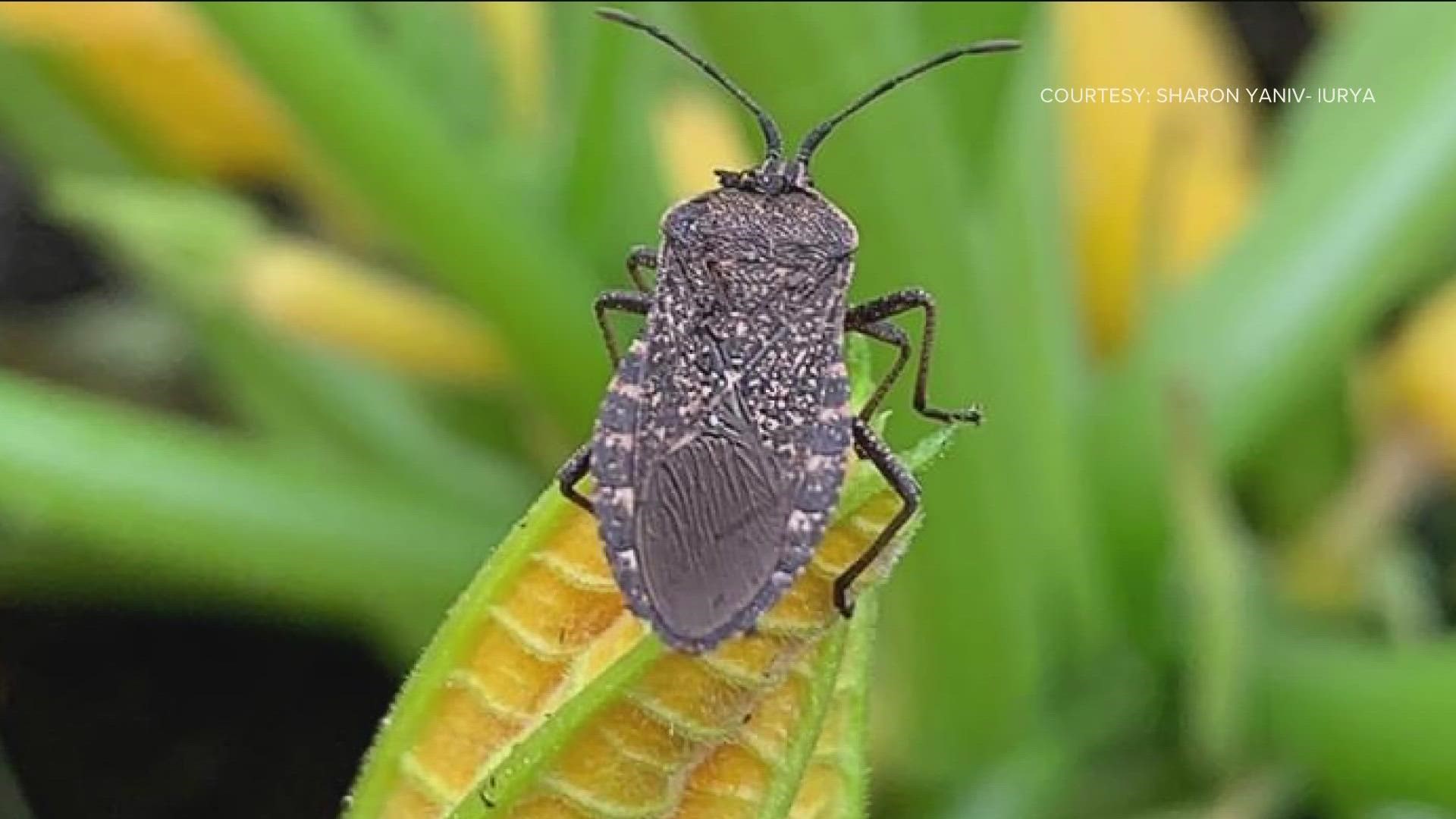BOISE, Idaho — Over the last few weeks, many Idaho gardeners have been posting pictures of some of the nasty little garden pests that have been munching on flowers, fruits and vegetable plants, wondering what to do about them.
On Thursday's You Can Grow It, KTVB Garden Master Jim Duthie takes a look at three of the more common garden pests around Idaho right now, with steps to take to get rid of them.
The little critter getting the most attention lately is the squash bug. Duthie hates squash bugs more than any other garden pest and many viewers feel the same way. The only good thing about the bug is that some birds seem to find them rather tasty.
Squash bugs are dark gray to dark brown, about one-half to three-quarters of an inch long, with alternating orange and brown stripes and two antennae. They are particularly fond of squash, melon and pumpkin plants.
The adult bugs will lay clusters of dozens of tiny copper-colored eggs on the undersides of the leaves. They hatching larvae will then feed off the leaves.
Squash bugs will suck the plant fluids from the stems, leaves and even the fruit and the plant will eventually die. The leaves wilt and turn yellow, the turn black, dry up and become brittle.
If you suspect damage from squash bugs, act quickly to prevent an infestation and a loss of your entire crop. Check daily to pick off any adult bugs and squash those squash bugs, or drop them in soapy water.
Then, check the underside of leaves for clusters of eggs. Scrape them off, or use the sticky side of tape.
There are some organic methods to control squash bugs. Spray the affected plant surfaces with neem oil or insecticidal soap, or dust it with diatomaceous earth, which is like ground glass on the soft bodies of the bugs, but harmless to pets and people.
Clear away any mulch and other debris from the base of the plants so the bugs can't hide and try planting resistant varieties of squash, like butternuts, acorns and crooknecks.
There are also other plants you can place nearby that will repel squash bugs, like marigolds, nasturtiums and strongly-scented herbs, like mint.
Several people have said they lost part or all of their raspberry patches to raspberry cane borers. Raspberry cane borers are slender, long-horned beetles about a half-inch long.
They're black with an orange thorax and long antennae. Raspberry cane borers aren't always noticeable when they first show up. They'll bore into the new stalks and canes that will bear next year's berries and often lay eggs in the tender tips of new stalks and then bore down into the cane, where they'll overwinter.
Check the canes for borer entry holes and then prune out those canes and burn them or throw them away. Some commercial sprays are available at garden centers.
Aphids are another frequent visitor to Idaho gardens. They are very small, usually less than an eighth of an inch long and can be red in color, as well as green or brown, and some are black or gray. Some aphids even have a wooly texture, making the plant appear fuzzy.
Aphids usually don't cause significant damage to the health of the plant, but they do secrete a sticky fluid called honeydew, that drips onto plant surfaces and in some cases, can lead to fungus that could damage the plant.
You can temporarily dislodge aphids with a blast of water, but they might come back, or treat with neem oil or insecticidal soap. Some gardeners have found that releasing lady bugs onto aphid-infested plants is an effective way of getting rid of these pests.
An aphid colony is like a Thanksgiving feast to lady bugs and their larvae. You can purchase a carton of lady bugs at many garden centers.
Watch more You Can Grow It:
See them all in our YouTube playlist here:

